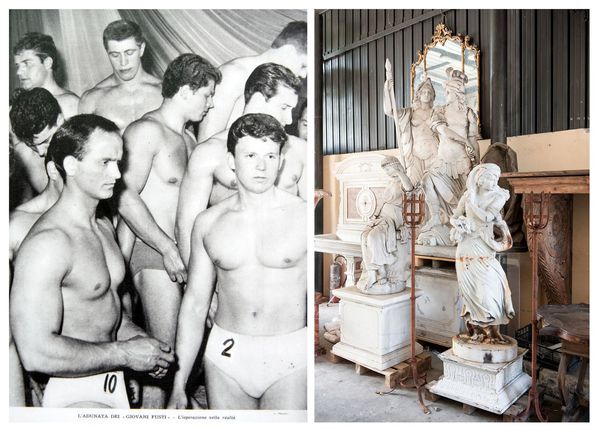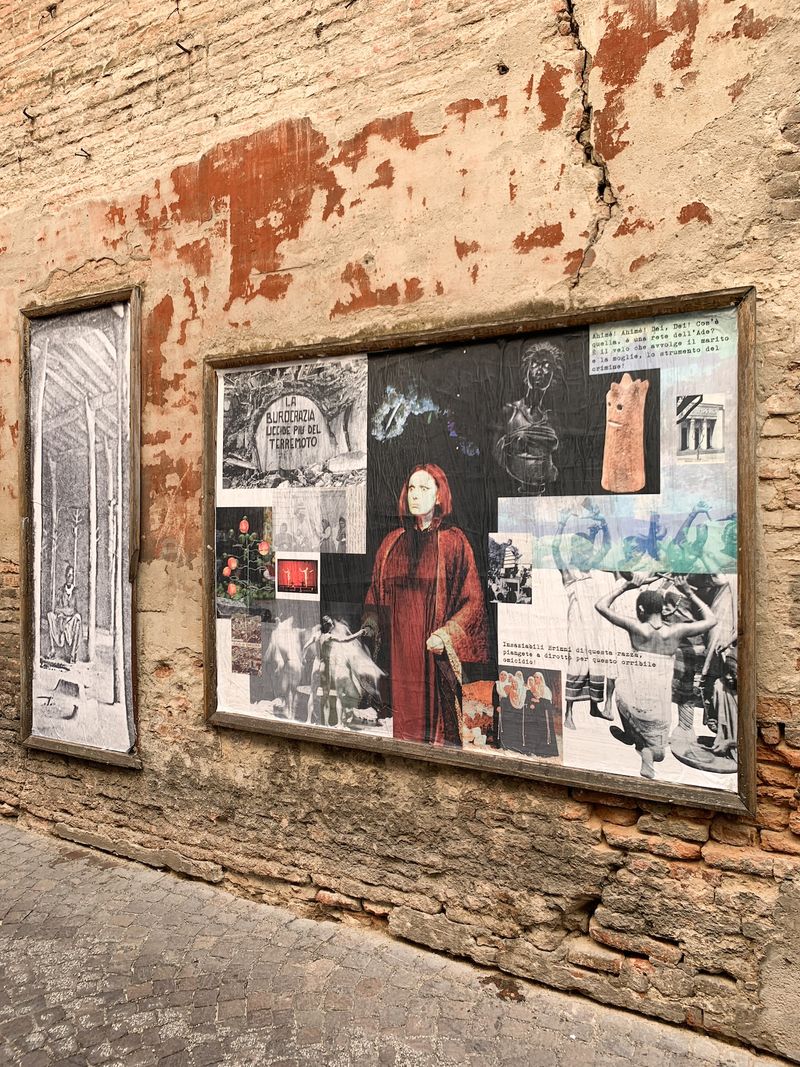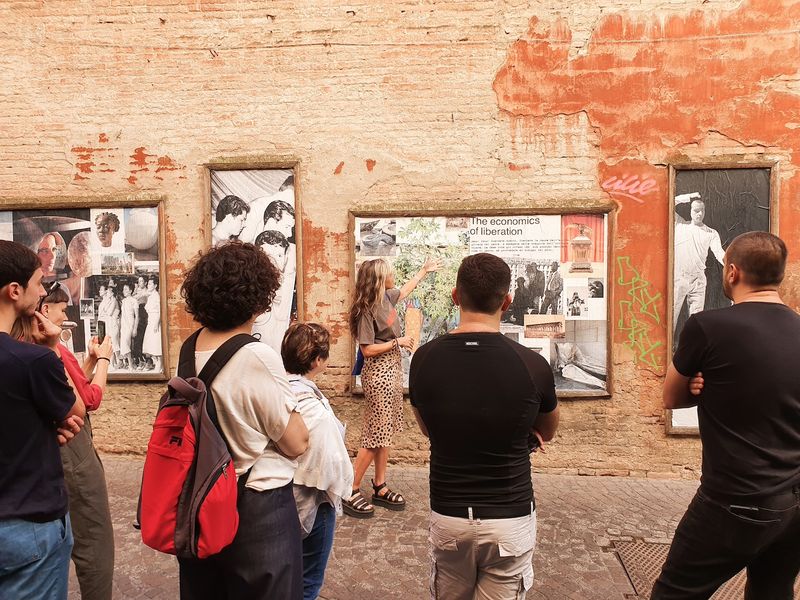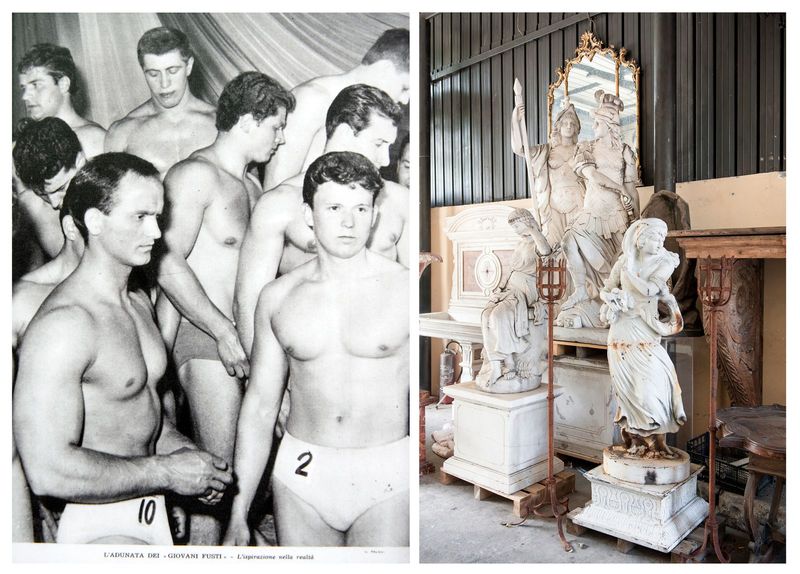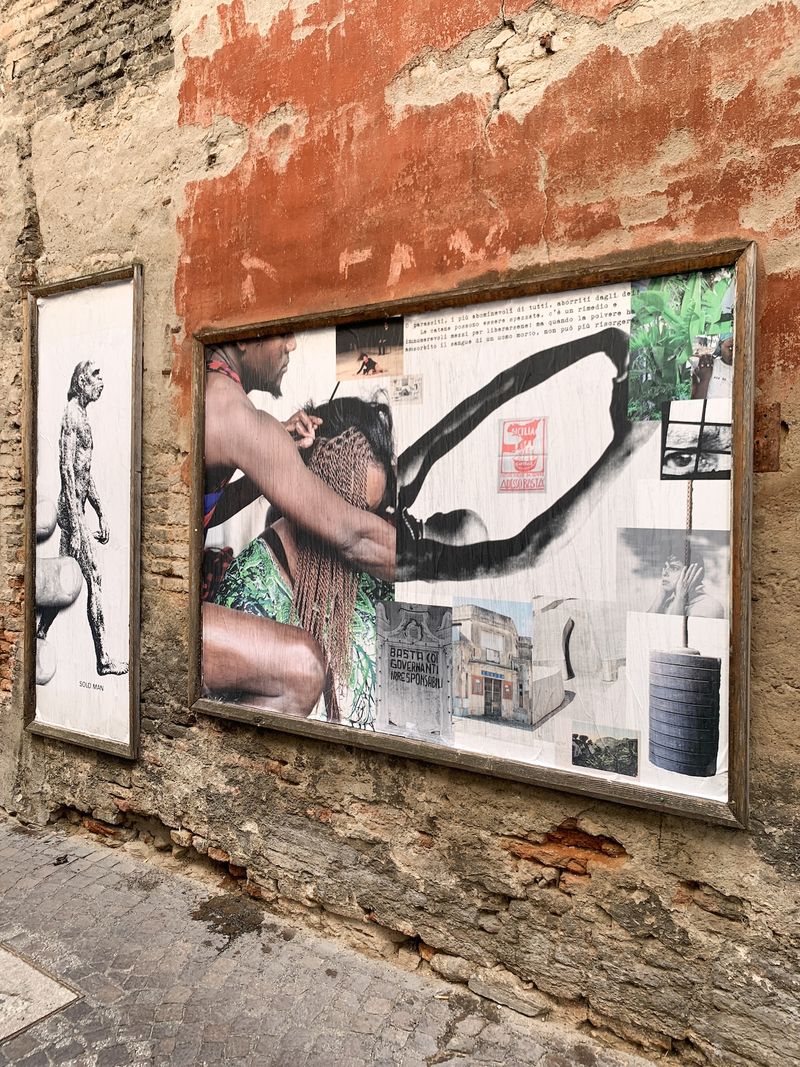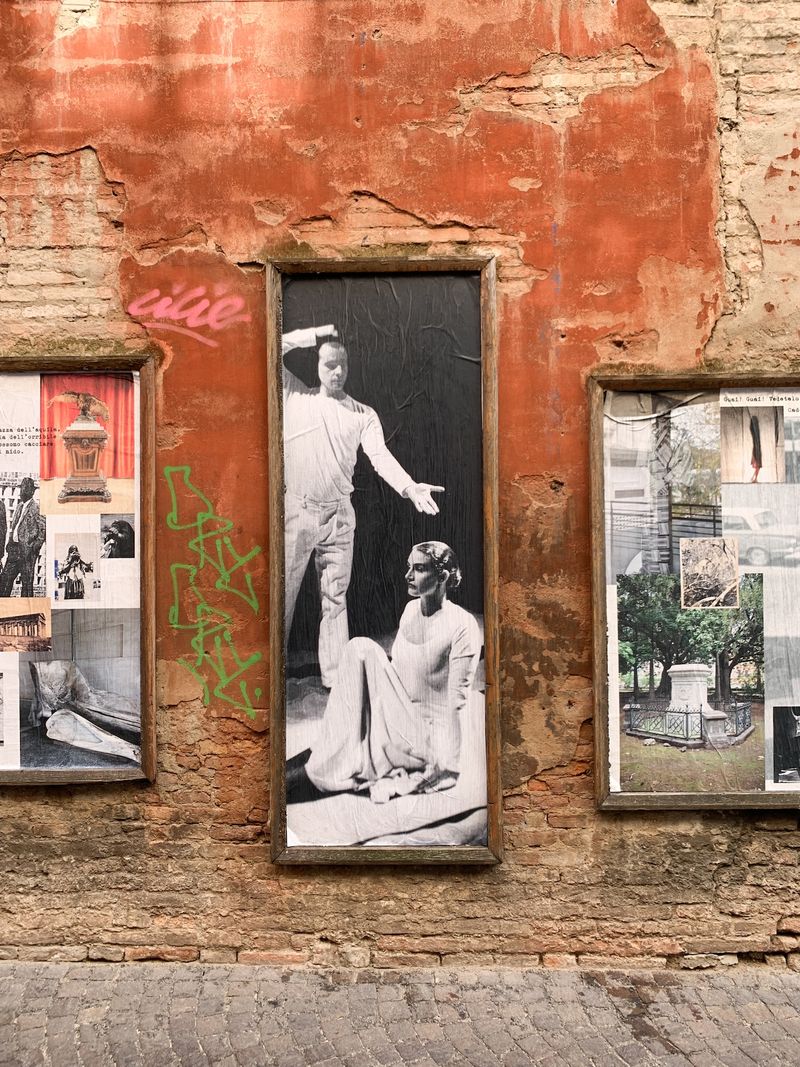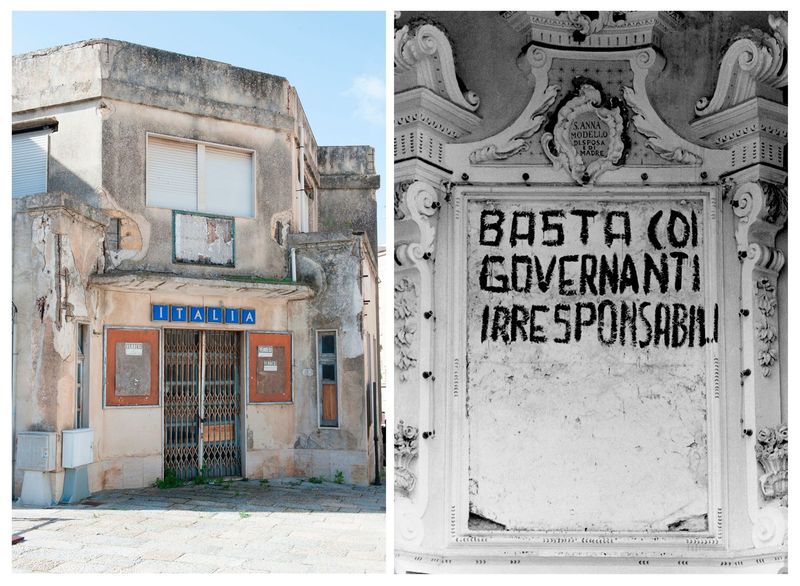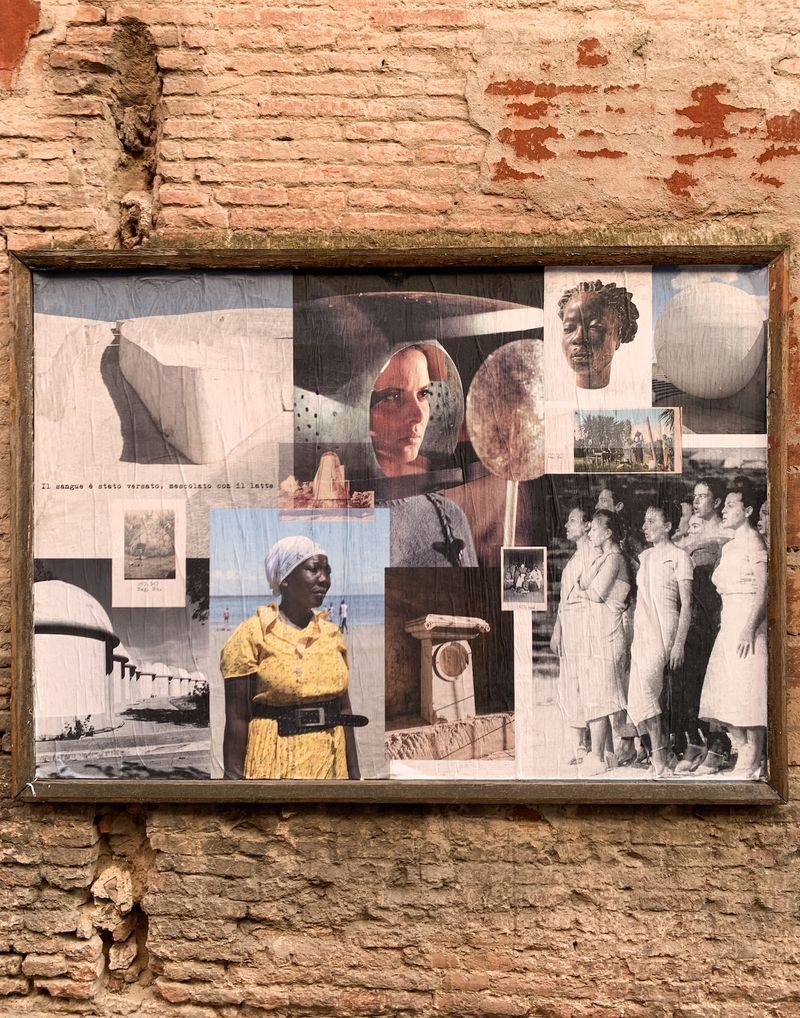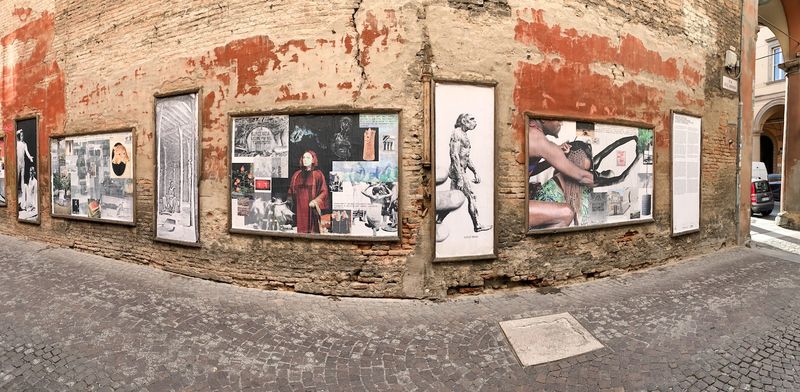Gloria Oyarzabal on Her Public Installation at PhMuseum Days
-
Published29 Apr 2024
-
Author
Discovered through last year's Festival Open Call, the exhibition of Appunti per un’Orestiade Africana brought a much needed conversation on the universalization of hegemonic discourses, such as democracy, to the streets of Bologna.
As the PhMuseum Days 2024 Open Call is now welcoming applications, we touched base with the selected artists of last year's edition to delve into their process and experience in Bologna. Here, Gloria Oyarzabal guides us through the key concepts of her project, while recalling moments from the festival's opening weekend.
Ciao Gloria. Can you share a bit of the process of image gathering and collage-making, leading to Appunti per un’Orestiade Africana?
I saw Pasolini's film Appunti per un’Orestiade Africana years ago and I found it incredible, both conceptually and cinematographically. I really wanted to come up with something around the reflection that Pasolini raises and link it to timeless aspects, such as the concept of democracy, questioning their universalization.
The film was shot in Tanzania, and I had been working on an experimental documentary production between Ghana and Tanzania for two years. In 2022 I did an artist residency in Gibellina, Sicily, invited by Fondazione Orestiadi as the winner of the Gibellina Open Road & Site Specific Festival call.
All the stars aligned: Pasolini, the Orestiade, Tanzania, Gibellina… It was clear that it was the ideal moment to resume this project and question, once again, the hegemonic discourses that are universalized by supremacist ideologies.
In these collages, as usual in my practice, I use archive images. This time, I added text excerpts from the Orestiade. My images are taken in Tanzania, in the dystopian village of Gibellina, in the fascinating Cretto di Burri, in different locations on the island of Sicily, while the archive images come mainly from the Fondazione Orestiadi, from the Rete Museale e Naturale Belicina, from the archives of the National Museum of Dar Es Salaam...
How much are installations relevant for you to communicate an idea?
When you think and develop a project, it is generally not finished until you put it in the room, formalize its reading and the dialogue with the viewer. Installations are part of the whole process, even more so today with concepts such as expanded photography or post-photography. It has become part of the language. A work can be magnificent and yet remain “silenced”, or at least at a very low volume, if there is no formal conceptualization behind it. I am not talking about great scenographies or fireworks. It can be something “classic”, discreet. Personally, it is a part of my practice that I love!
At PhMuseum Days your work was displayed in billboards, formerly belonging to the Municipality of Bologna. It was an unconventional, challenging installation: what impressions did it leave you with?
I thought it was a great idea. As we know, after the pandemic many museums, art centers, galleries, and cultural spaces decided to bring their proposals out in the streets, what was called “out of the box”. I had many exhibitions that year and I thought it was a great solution, which offered the passerby information and experiences that, in some cases, they would not have had otherwise.
The relevance of public art today is a reaction to former establishments – museums, galleries, and so on – and to their limited accessibility. Public art clearly bears great political power.
Personally, I think my installation in Bologna was spectacular! The pieces were being read, contemplated, enjoyed. I held a guided tour during the opening weekend and I could hear very positive comments about being able to access this kind of installation in such a spontaneous way. One day I did an experiment and I stayed for a while, looking: people on bikes, walking, on motorcycles, in cars... many stopped to look and read. A pleasure, really. One morning I found that someone had wanted to take one of the images! Great! I hope Pasolini would have liked this story.
What was it like to join us in Bologna for the opening weekend, as part of a group of international artists?
Absolutely fantastic! I had such a great time and felt so cared for. The meetings with the other artists, many of them coming from far away, the guided tours of their exhibitions, the delicious dinners and bars of the city, were an exquisite source of very interesting conversations. Meeting my dear Marisol Mendez and enjoying the incredible city, its museums and events was a real gift.
Any advice to share with other photographers on how to present their work for the application?
I think that projects nowadays must be supported by a good foundation: a deep research of the subject you are dealing with. The photographic part is of course essential, but the statement must go in parallel, with a dynamic, rich and nourishing proposal. An understandable, accessible text, with a certain tension and mystery, as well as an ideological positioning. On the visual level, I would simply say that the essential thing is to be sincere. Thus, the image-text binomial shapes a unique experience.
--------------
All images © Gloria Oyarzabal
--------------
Gloria Oyarzabal's project Appunti per un'Orestiade Africana was selected last year through the PhMuseum Days open call. Apply to the new edition to have the chance of exhibiting in Bologna, Italy next September. The deadline is set for 9 May.


